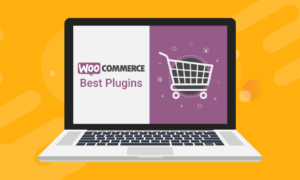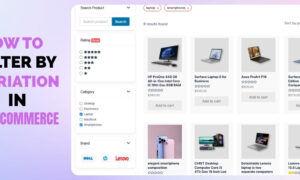WooCommerce is one of the most sought-after platforms to set up online stores – for a start-up or a business conglomerate. With the eCommerce market getting a facelift and witnessing astounding growth in the past years, the relevance of WooCommerce development services has only gotten more relevant.
WooCommerce is convenient, easy on the pocket, loaded with features, and resourceful enough to accommodate all business types. But with convenience comes a fair share of challenges; yes, the security problems and fraudulent transactions fuel the issues merchants face in running an online eCommerce site. WooCommerce powers 21.53% of online stores globally. Considering the platform’s sheer market volume, the numbers are high for the platform concerning cyber attacks.
Reasons to Implement Security and Fraud Prevention Best Practices
The frauds can happen in different forms – identity thefts, merchant fraud, card testing fraud, phishing, fake orders, chargeback, credit card fraud, or return fraud. Merchants must make ample provisions in their WooCommerce development services while building their websites to accommodate smart security and fraud protection tactics. Online stores should always prioritize protecting their business, money, and sensitive customer information. They should act immediately to minimize customer impact and mitigate further hassles.
This blog examines the top 5 best practices one should adhere to for maximum security and fraud protection for their WooCommerce website.
Vulnerability Tests and Regular Platform Updation
Fraudulent purchases can give rise to customer disputes and brand distrust. Employ vulnerability scanners like Intruder, UpGuard, and Qualys to scan your website. They will alert you of potential weak spots that cyberpunks target to hack your customer accounts and make fake purchases. Monitor customer behavior like buying patterns, login attempts, order history, shopping time, etc. You should consider any deviations from the regular pattern as a red flag. Keep your WooCommerce platform updated, along with its integrated plugins and themes. Developers often release updates to patch vulnerabilities and strengthen security. Staying current with these updates equips your store with the latest security features, preventing hacker exploits. Also, use the automatic updates from WooCommerce to stay on top of your eCommerce security game.
Implement PCI Compliance and SSL Encryption
Prevent credit card fraud by adhering to industry standards. PCI denotes Payment Card Industry Data Security Standard (PCI DSS). It is a set of guidelines that are put in place to ensure that all companies handling credit card information maintain a secure environment. Secure Socket Layer (SSL) encryption is necessary for any WooCommerce website. It encrypts data transmitted between your business and customers, making it difficult for cybercriminals to intercept and decipher sensitive transaction details such as credit card information. The presence of SSL displays a padlock icon in the address bar, raising customer conviction in your brand. You can utilize the free SSL certificates that hosting providers offer to keep vital security measures cost-effective.
Use Strong Passwords and Two-factor Authentication
The principal mistake merchants need to correct is using weak or predictable passwords. Make sure you choose a strong password involving uppercase, lowercase, numerals, and special characters. The user ID and password will complete the first layer of protection. Add an extra layer of protection with Two-factor Authentication (2FA) involving biometric authentication, answering a security question, or SMS verification. You can also deploy Multi-factor Authentication (MFA) for both admin and customer accounts, which is the most viable method of login protection. MFA requires users to enter a one-time code sent to their mobile device or email address, ensuring safety even if someone accesses your password. Geolocation accesses user IP addresses to authenticate logins.
Apply OTP and Avoid Credit Card Saving
Enable resources to let customers use OTP (one-time passwords) to complete significant purchase decisions. It is an additional step employed by the majority of eCommerce sites to protect transactions. OTP is often a 4-digit numeric code sent to the customer’s phone or email address. The step requires them to enter the code into the designated field to complete the transaction. This extra measure helps avoid unauthorized online malicious transactions. We also advise clients to disable provisions for customers to save any sensitive information, such as credit card details. It will help you avoid leakage of payment data from your website and diminish the chances of fraudulent transactions in case of security breaches.
Enforce Reliable WAF and DDoS Protection
Hackers often tend to target WooCommerce stores with distributed denial-of-service (DDoS) attacks. They can thus overwhelm the server and disrupt business operations. Invest in a reliable Web Application Firewall (WAF) and DDoS protection solution to counteract this. Firewalls act as a first-line defense to filter out bot-driven malicious traffic and block unauthorized access attempts. DDoS protection services mitigate the impact of such attacks by distributing the traffic across multiple servers or filtering out suspicious requests. WooCommerce-compatible security plugins can help you set up these defenses seamlessly. It is also ideal to set up a combination of host-based and cloud-based WAFs. It will help traders circumvent common security threats like SQL injections and cross-site scripting. It also lets you employ custom rules to block traffic based on the source IP address, location, and reputation score.
Final Thoughts
Online transactions are the lifeblood of any eCommerce business. So, there are no two ways to maintain security and business protection. Increased market share has made WooCommerce a high-priority hacker target. Even a robust platform like WooCommerce has its weak spots. Your smartness lies in identifying the chinks in the armor and working on them quickly, efficiently, and effectively. Proactive prevention goes a long way in the world of security. Always choose the best plugins, tools, and software for protection, data backup, and recovery.
By following the above steps, we are confident that you can significantly enhance the security of your WooCommerce store. The cost of a security breach far outweighs the investment in preventive measures. Always remember that customer trust and brand reputation depend on the security and protection your site offers.



































